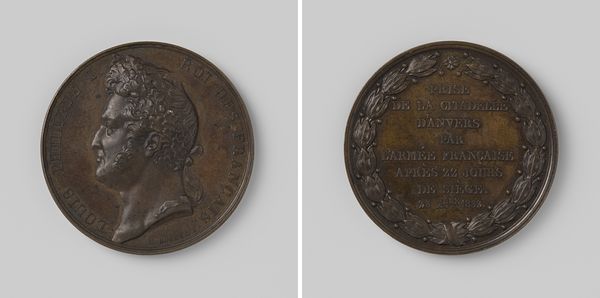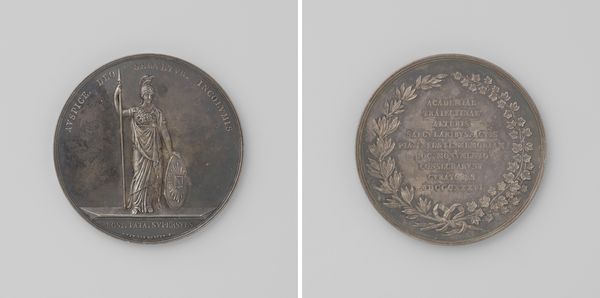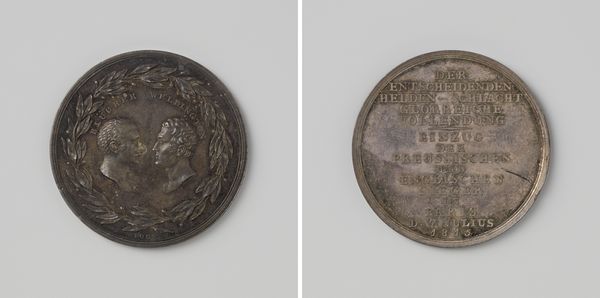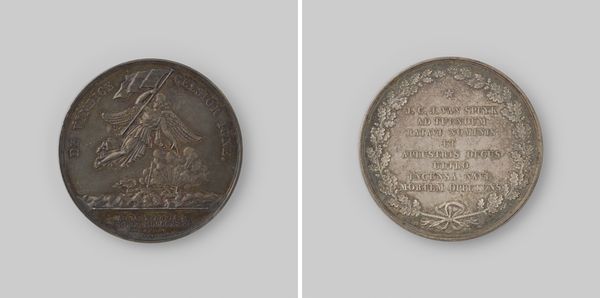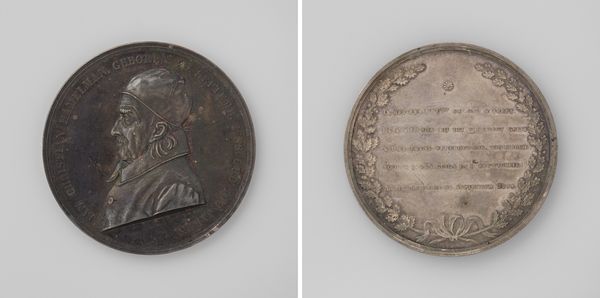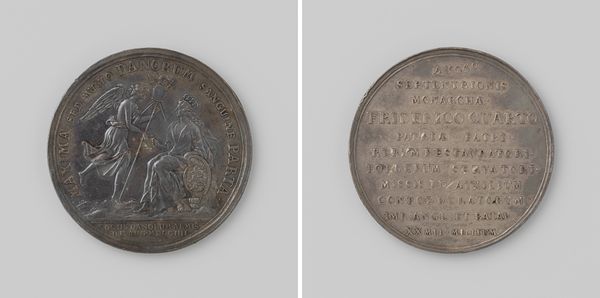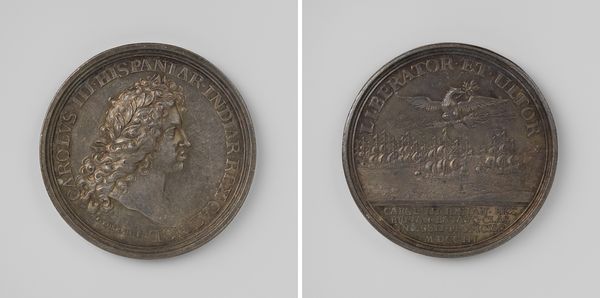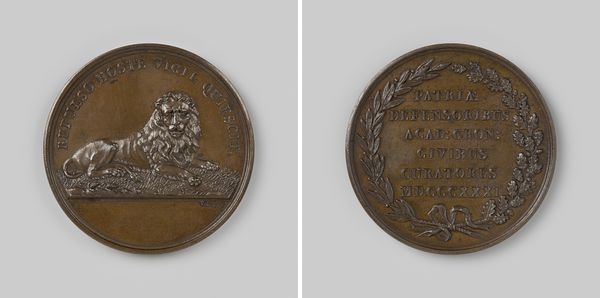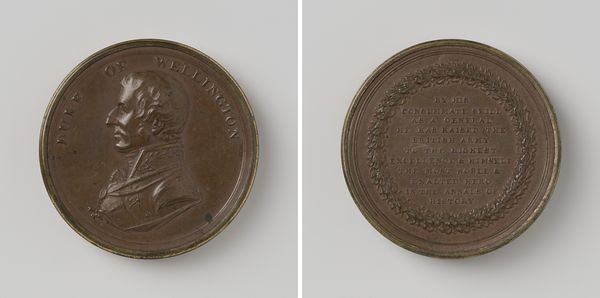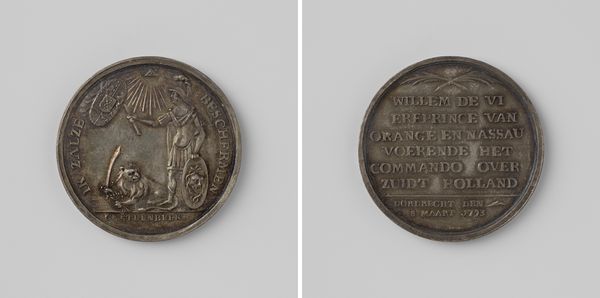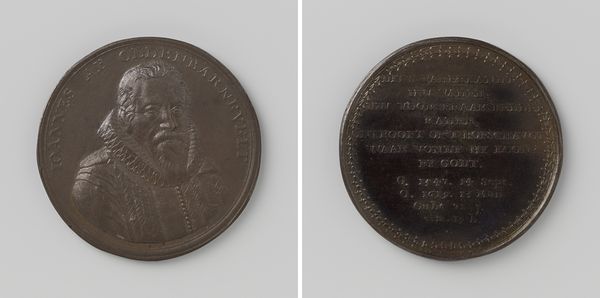
metal, sculpture
#
neoclacissism
#
metal
#
sculpture
#
sculptural image
#
sculpture
#
history-painting
Dimensions: diameter 4.2 cm, weight 38.18 gr
Copyright: Rijks Museum: Open Domain
Editor: Here we have a metal sculpture from 1833 by M. Borrel entitled "Bezoek van Leopold I en Louisa Maria, koning en koningin der Belgen aan Parijs" or "Visit of Leopold I and Louisa Maria, King and Queen of the Belgians, to Paris." It appears to be a commemorative coin or medallion. I'm struck by how official and stately it feels, almost like propaganda. How do you interpret this work, considering the period in which it was created? Curator: It's interesting that you use the term propaganda. This medallion operates within a specific political and social context. Consider the early 19th century, a time of great upheaval and shifting national identities in Europe. These objects served to solidify power, legitimize rule, and broadcast an ideal image of monarchy, obscuring potentially uncomfortable realities for the working classes. It makes me think about who produced and consumed it. Were such objects made for wealthy, privileged elites who collected art or gave them as gifts, to show the Belgian royalty in a glorious light to visiting French aristocracy? Editor: That's a great point! I hadn't considered how it was intended to be circulated. It reinforces the idea of a harmonious relationship between the Belgian monarchy and the French, especially after the Belgian Revolution. The inscription celebrating their visit, framed by what looks like laurel leaves—symbols of victory and peace—feels carefully constructed. What could have been its significance within discussions of national identity and cultural exchange during that time? Curator: Absolutely. And beyond its intended symbolism, think about what the medallion omits. It focuses on idealized figures, but what about the working class or colonized populations whose lives were also impacted by Leopold I? Engaging with art history also demands critical engagement with power structures. Do you see something of modern day celebrity worship culture reflected in this? Editor: I definitely do. Seeing it through that lens really changes my perspective. I went from thinking about official visits and "high society", to something else, more insidious! Curator: Exactly! Hopefully we will both ask questions about visual representation in these broader terms moving forward.
Comments
No comments
Be the first to comment and join the conversation on the ultimate creative platform.
